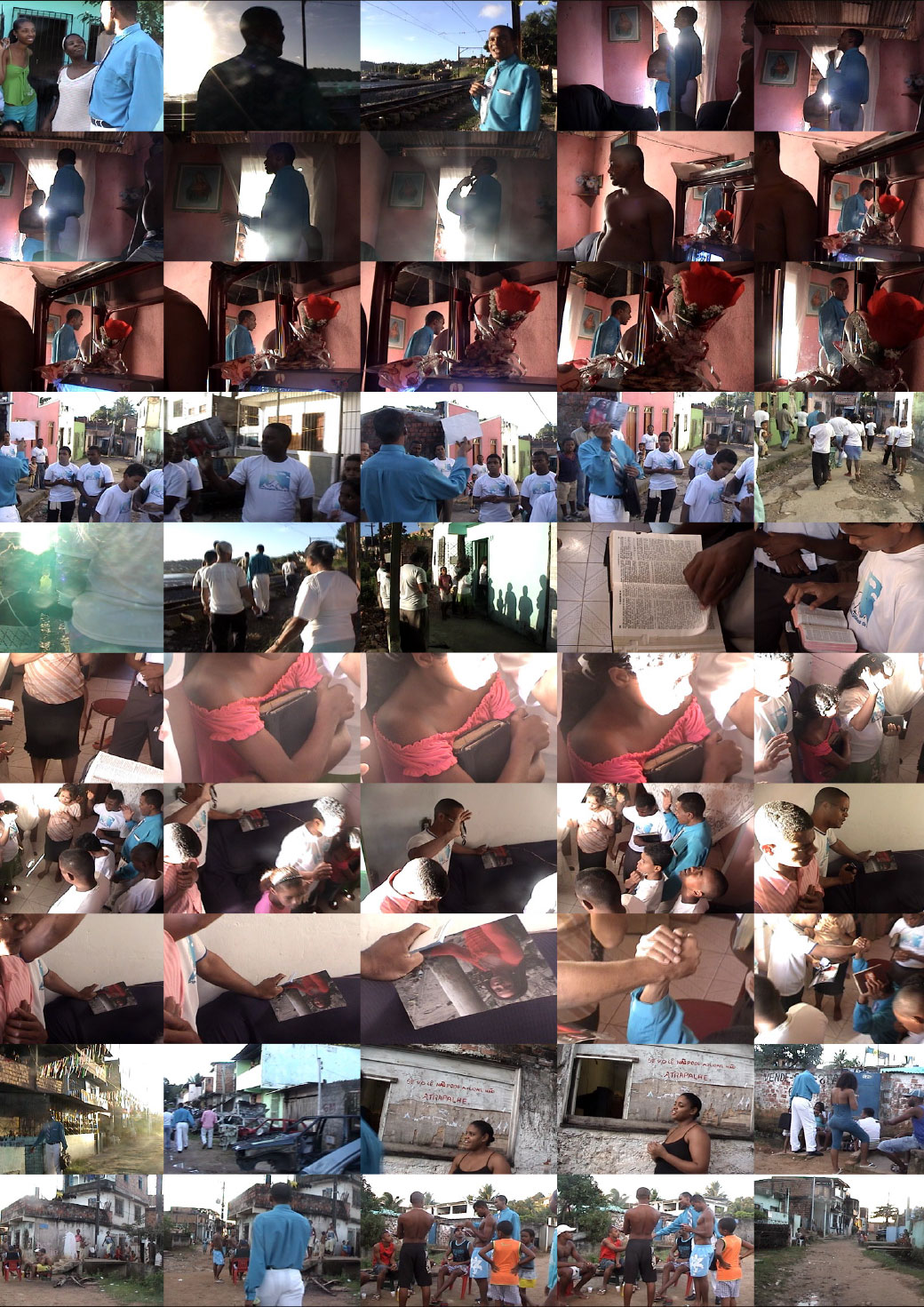Sérgio e Simone #1 | 2007-2009

When I met Simone, a transvestite, she was living with her boyfriend in an abandoned house at Ladeira da Montanha, an old borough between Cidade Alta and Cidade Baixa (High town and Low town, respectively). Like the majority of the residents of Ladeira da Montanha — one of the most degraded and run down in the city of Salvador – Simone was a frequent drug user who also took care of a fountain located nearby, the Fonte da Misericórdia (Fountain of Mercy), that served as a sanctuary for the cult of the orixás. About one month after the first week of filming, Simone had a crack overdose followed by a mystical revelation, in which she believes to have found God, a meeting that allowed her to escape death. Since this event, Simone abandoned her condition as a transvestite, returned to her parents home, and retook her Catholic name “Sérgio” and, in an outbreak of fanaticism, believes him/herself to be one of the last people sent by God to save humanity.

“Walking around, watching places, people, situations, and regarding the streets as a powerful creative laboratory was the first step in making the video Sergio e Simone. I was deeply interested in creating a piece featuring the prostitutes who inhabit Ladeira da Montanha (Mountain Hill), one of the most degraded areas of the old town of Salvador, which connects the high and the low cities. Known for harboring brothels in which middle- and high-class kids had their first sexual encounters in the 1960s and 70s, Ladeira da Montanha decayed further and further until it became a dangerous, abandoned place in the 1980s.
In order to build a rapport with some of the locals and infiltrate myself into the lives of the prostitutes, I started going to Fonte da Misericórdia (Fountain of Mercy), the spring that supplies water to Ladeira. In one of my trips to the fountain, I met Simone, a transvestite, the main subject of my research. She used to live with her mate in a run-down house on Ladeira da Montanha. Like most people living in this area, Simone was a drug user, but she also cared for the Fountain, which she regarded as a sanctuary to worship her orishas. This fabulous story led me to let go of the idea of working with the prostitutes, and I followed this new character.
I spent two weeks helping Simone to arrange for her mate, Mauricio, to get surgery, as he had broken his feet. This was our agreement to start the film. I helped the kid, who took me as the sister he had long left in Aracaju, a white woman like me. I made the video A Guardiã da Fonte (The Fountain’s Guardian) and, one month after the first session, Simone went into convulsions due to a crack overdose, followed by a mystical delirium in which she believed she had met God. After that, Simone quit being a transvestite, returned to her parents’ house, changed back to her baptismal name, Sérgio, and considered himself one of the last few people sent by God to save humanity. I kept filming Sérgio, and that resulted in the piece Sergio e Simone.
Daily life is constituted by an armor of conducts, marked by an imaginary barrier that separates individuals whose own consciousness is covered up by stigma-identities, stereotyped images through which they are represented. The imperative order that separates us from other modes of existence is fictitious. The urge to disobey it and cross boundaries, venturing into a different realm, other than the place I find myself in, has motivated my art practice: becoming familiar with other social codes and allowing myself to be affected by them, out of the pleasure of finding myself strange and surpassing my own boundaries.
My work is endowed with an anthropological phatos; I seek to know a world other than my own. This type of coexistence accepts contradictions, tensions, challenges, destabilizations – mutations. The Other is not only the dissimilar – the foreigner, the outcast, the excluded –, it is also a sense of incompleteness that keeps us in suspension, as though we are unfinished, awaiting our own selves. This is a meeting that requires time, complicity and a desire to become close with what seems distant to us.
The affective state which brings me closer to and launches me into each of these realms causes a sort of blindness that distorts what is real – instead of the testimony, the fable. Such is the policy of meetings, and, therefore, it is what establishes the character of the artwork. On meeting with individuals, my presence is boosted; I become an active character, aiming to extract, through interaction, complicity, trust and affection, revelations that can make the veil of identity disappear, the veil which covers and neutralizes the living presence of the subject.”








